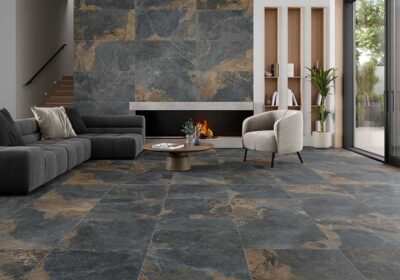Slate Effect Wall tiles how do they work?

Slate effect wall tiles in ireland are designed to replicate the appearance of natural slate stone while offering the practicality and ease of installation associated with ceramic or porcelain tiles. They are a popular choice for both indoor and outdoor spaces due to their rugged, textured look. Here’s how they work:
1. Material Composition: Slate effect wall tiles are typically made from ceramic or porcelain materials. These materials are more lightweight and easier to work with than natural slate while still retaining the look and texture of real slate. The tiles are manufactured using molds that imprint the distinctive patterns and textures of slate onto their surface.
2. Texture and Appearance: The tiles are designed to mimic the rough, uneven texture of natural slate. They often feature variations in color, surface patterns, and even faux “chipped” edges to closely resemble the irregularities found in real slate stone.
3. Installation: Installing slate effect wall tiles follows the same general process as installing regular ceramic or porcelain tiles. The tiles can be installed on a variety of surfaces, including drywall, cement backer board, or existing tile surfaces.
The steps involved in installation typically include:
- Surface Preparation: The wall surface should be clean, dry, and smooth. If necessary, apply a suitable adhesive or mortar to create a solid base for the tiles.
- Tile Layout: Plan the layout of the tiles to ensure they fit well in the space and to avoid small, awkward cuts at the edges. This is particularly important for achieving a natural look.
- Adhesive Application: Spread tile adhesive or mortar onto the wall using a notched trowel. This creates a bonding surface for the tiles.
- Tile Placement: Press each tile into the adhesive, using spacers to maintain consistent spacing between tiles. The texture of the tiles may require a slightly different approach when pressing them into the adhesive compared to smooth tiles.
- Grouting: After the adhesive has dried and the tiles are securely in place, apply grout between the tiles. The grout lines help enhance the appearance of individual tiles while also securing them further.
- Finishing: Once the grout has cured, clean the tiles and grout lines. Apply a sealer to the grout to protect it from stains and moisture.
4. Maintenance: Slate effect wall tiles are relatively easy to maintain. Regular cleaning with mild soap and water should suffice to keep them looking great. Sealing the grout lines can help prevent stains and make cleaning even easier.
5. Benefits:
- Aesthetics: Slate effect tiles offer the beauty of natural slate without the cost and maintenance associated with real stone.
- Durability: Ceramic and porcelain tiles are durable, resistant to moisture, and less prone to chipping compared to natural slate.
- Easy Installation: These tiles are often easier to work with than real slate due to their consistent size and shape.
In summary, slate effect wall tiles provide the aesthetic appeal of natural slate with the benefits of ceramic or porcelain materials. They work well in various interior and exterior spaces and are a popular choice for those who desire the look of slate without the complexities of working with natural stone.
